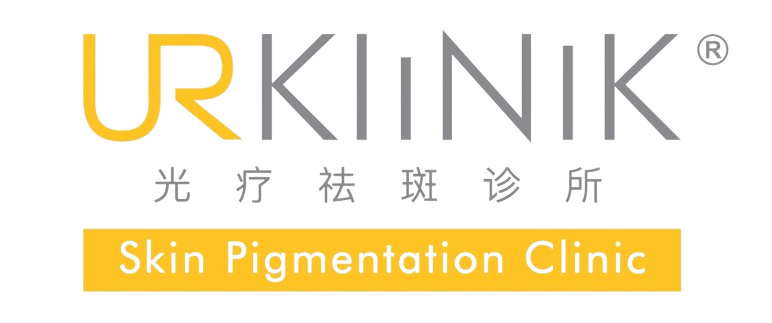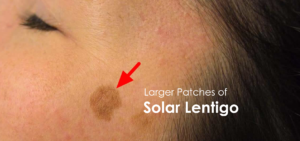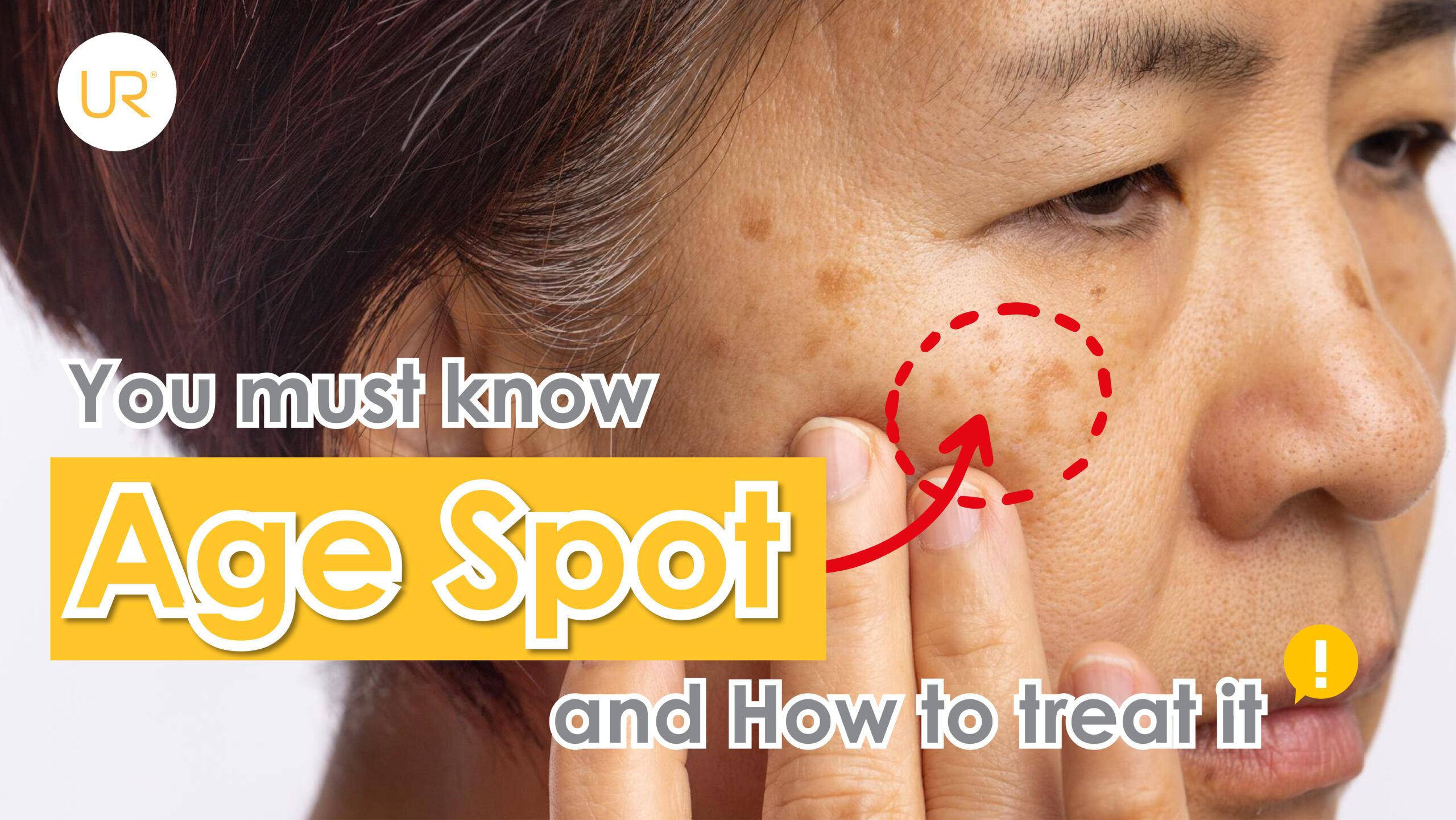
19 Jan What you need to know about Age Spot and how to treat it?
What you need to know about Age Spot and how to treat it?
Common Age Spot and How does it looks like?
Solar lentigo, commonly known as age-spot, is the most common benign skin lesion that occurs in sun-exposed areas.
Diagnosis is based on the clinical appearance of small flat, well-defined of round to oval shaped lesion, with evenly pigmented light to dark brown. Solar lentigo most commonly appears on the face, arms, back of hands, and upper part of the trunk. These spots initially are smaller than 5 mm in diameter, which slowly increase in number and grow in size. Many lesions can eventually join to form larger patches.
What is the causes of Age Spot?
Age, exposure to UV light, photodamaged skin, genetics and hormonal influences are all factors contributing to development of solar lentigens
1. Sun Exposure

Solar lentigines or age spots are the result of local concentrations of excess melanin, caused by increased activity of melanocytes (melanin-producing skin cells) located in the basal layer of the epidermis. The major determining factor of pigment formation is not the quantity of the skin’s melanocytes, but their activity level. Within the melanocytes are pigment granules, called melanosomes. These contain tyrosinase, an enzyme that is responsible for formation of melanin which results in age spots formation when melanin production is in excess.
The melanin that is produced absorbs the UV-radiation of the sun’s rays in order to protect the skin. A limited sun exposure will result in an even skin tanned. However, if your skin is exposed to too much UV radiation over a long period of time, this will increase the activity of melanocytes resulting in too much melanin production.
As a result of over production of melanin, the appearance of brown spots, solar lentigines for an example, will be found on the most commonly exposed areas, such as the face, hands and décolletage.
2. Skin Aging
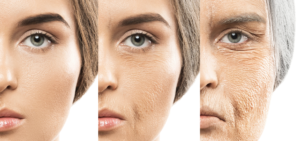
As skin ages, the number of melanocytes decreases but the remaining ones increase in size and their distribution becomes more focused. Regulation of the melanosomes also becomes less controlled in older skin.
These physiological changes explain the increase of age spots in those over 40 years old.
3. Genetic

SLC45A2, a pigmentation-related gene was found to be associated with ethnic difference in contributing to formation of solar lentigines. There are studies that revealed solar lentigines developed earlier and are more pronounced in Japanese than in German women.
4. Hormonal Influences

Oestrogen and progesterone are both main hormonal factors that will stimulate the over production of melanin via melanocytes that can cause skin pigmentation. Besides, the increase in production of melanocyte-stimulating hormone as a result of prolonged sunlight exposure often leads to pigmentation.
Who is affected by Solar Lentigo?
1. Race

Solar lentigens are seen in more than 90% of white peoples older than 60 years and in 20% of whites younger than 35 years. It is found more common in fair-skinned individuals than in dark-skinned individuals due to the fact that dark-skinned individuals have a greater amount of natural pigment that provides some degree of photoprotection.
2. Gender

PUVA lentigines are more common in men than in women. Tanning-bed lentigines, oral and labial melanotic macules are more common in women than in men.
3. Age
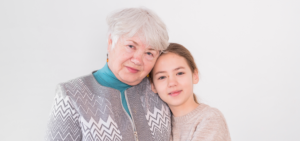
The prevalence of solar lentigens are directly correlated with increasing age. Having said that, lentigines can appear in both children and adults; however, children are more likely to have genetically associated lesions such as those of Peutz-Jeghers syndrome. Adults especially above 40 are more likely to acquire solar lentigens due to chronic sun ray exposures.
Treatment to Solar Lentigo?
For the treatment of solar lentigines, each person will have their own personalised management plan by their doctor, based on the types, severity and any potential triggering factors.
Effective treatments available for solar lentigines include:
1. Laser therapy -Q switch ND:YAG laser
2. Chemical peel (this procedure carries a risk of post inflammatory hyperpigmentation)
3. Cryotherapy
4. IPL (Intense pulsed light)
5. Topical creams like tretinoin and hydroquinone (prescriptions required)
Your doctor will review your condition and recommend the best suitable treatment for you.
How to prevent Solar Lentigo?
✅ Regular sunscreen usage is important for prevention of new pigments and reduce the rate of appearance and darkening of solar lentigines.
✅ It is recommended to use broad spectrum sunscreen with SPF > 30 and PA+++.
✅ Limiting your exposure to sun tanning may help in preventing solar lentigines at the same time.
At UR Klinik, we offer effective pigmentation treatment in Malaysia, specializing in light therapy to rejuvenate the skin and address concerns like melasma, hyperpigmentation, and dark spots. Our personalized approach can help you achieve noticeable results. Contact us today to schedule your appointment and experience the transformative power of light therapy.
